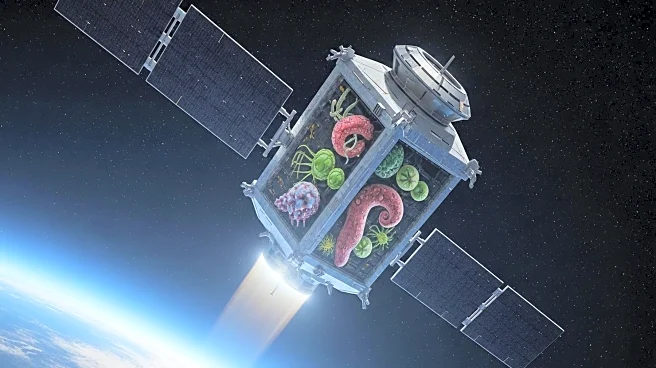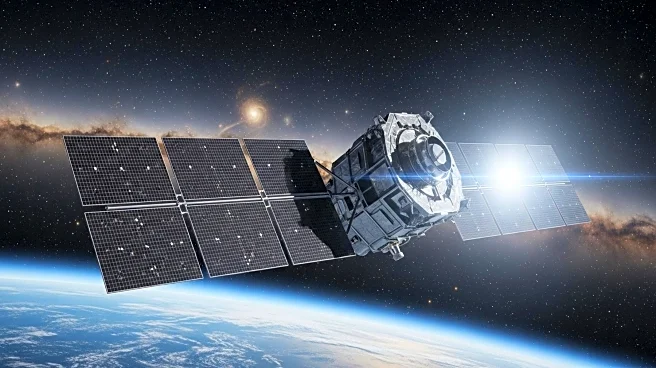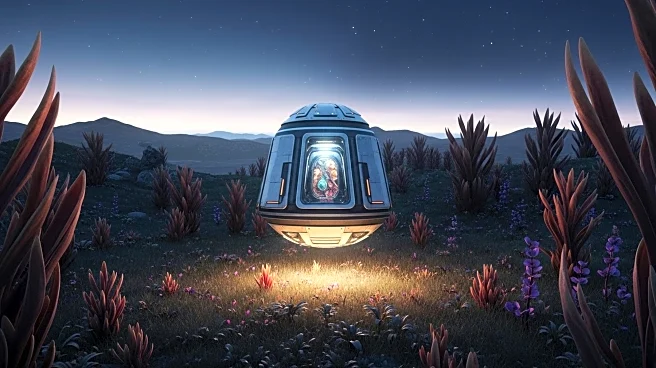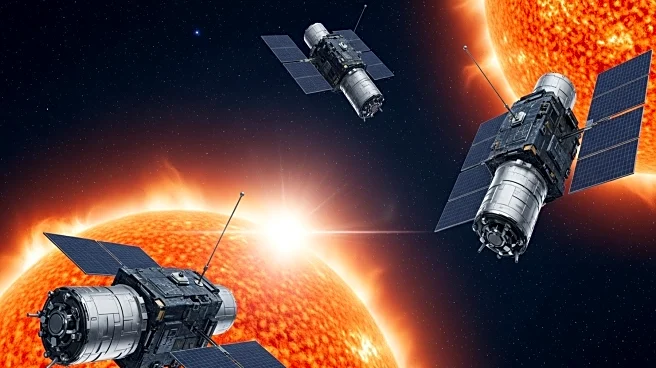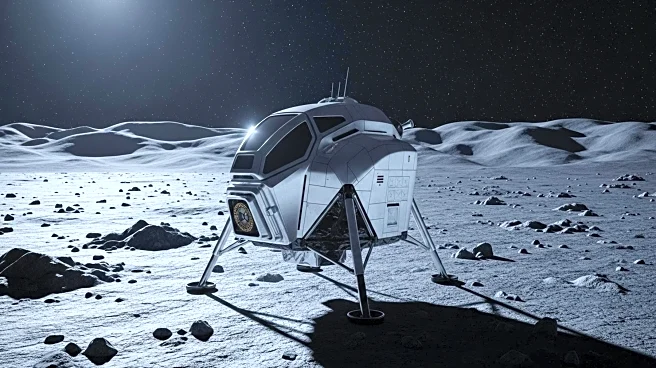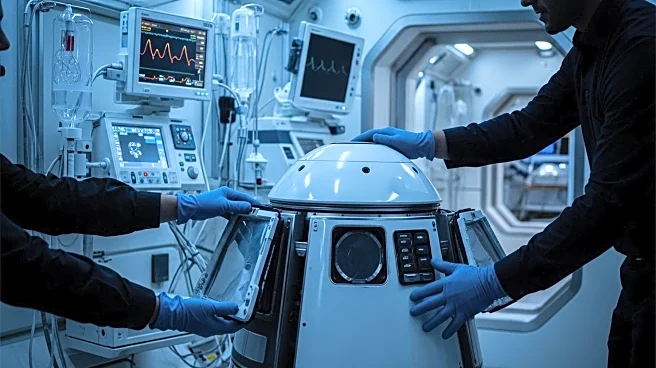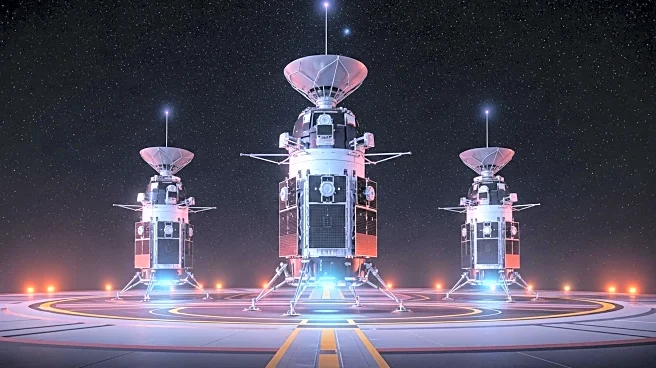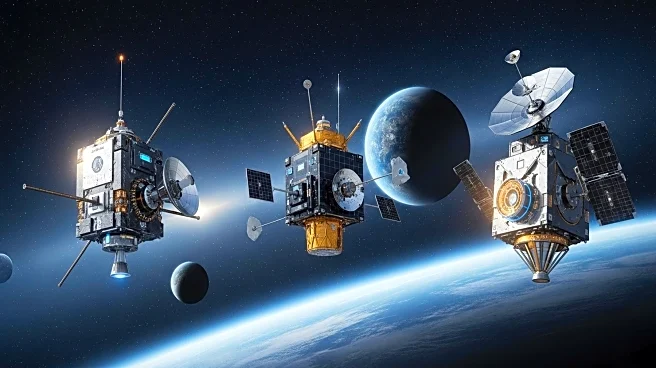What's Happening?
A Russian biological research satellite, Bion-M No. 2, returned to Earth on September 19 after a 30-day mission in orbit. The satellite, launched from the Baikonur cosmodrome, carried a diverse array of biological specimens, including 75 mice, over 1,500 flies, cell cultures, microorganisms, and plant seeds. Dubbed a 'Noah's Ark,' the satellite aimed to study the effects of cosmic radiation and weightlessness on these specimens. Upon landing in the Orenburg region, recovery crews quickly extracted the specimens for initial examination, focusing on potential nervous system issues in the flies. The mission was a collaborative effort involving Roscosmos, the Russian Academy of Sciences, and the Institute of Biomedical Problems. The research conducted is expected to contribute to the development of technologies for human life support during space flights.
Why It's Important?
The Bion-M No. 2 mission holds significant implications for space exploration and biological research. By studying the effects of space conditions on various life forms, scientists can gain insights into how prolonged exposure to cosmic radiation and weightlessness impacts biological systems. This knowledge is crucial for developing life support technologies for future manned space missions, potentially aiding in long-duration space travel and habitation. The mission also explores the panspermia hypothesis, which suggests that life on Earth may have originated from outer space. Understanding how microorganisms survive reentry conditions could provide evidence supporting this theory. The findings from this mission could influence future space missions and the design of spacecraft, ensuring better radiation safety and life support systems.
What's Next?
Following the initial examinations at the landing site, the biological specimens will be transported to laboratories for further analysis. Researchers will conduct detailed studies to assess the physiological changes in the specimens due to space exposure. The results will inform future experiments and missions, potentially leading to advancements in space travel technology and safety. The collaboration between Russian scientific institutions may continue to explore similar missions, expanding the scope of biological research in space. Additionally, the panspermia experiment results could spark further investigations into the origins of life, influencing both scientific and philosophical discussions.
Beyond the Headlines
The Bion-M No. 2 mission highlights the ethical considerations of using animals in space research. While such experiments are crucial for scientific advancement, they raise questions about the welfare of the specimens involved. The mission also underscores the importance of international collaboration in space exploration, as the findings could benefit global scientific communities. Furthermore, the exploration of panspermia touches on broader cultural and existential questions about humanity's place in the universe and the origins of life.

